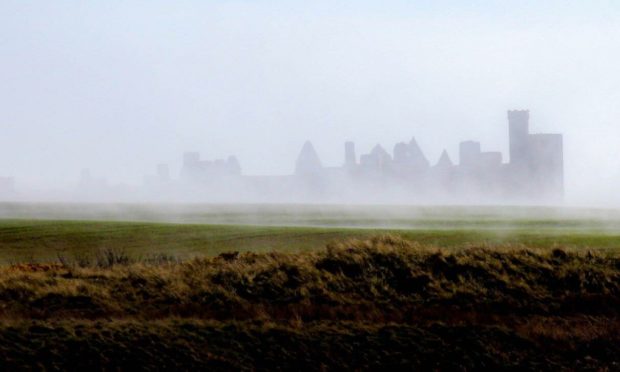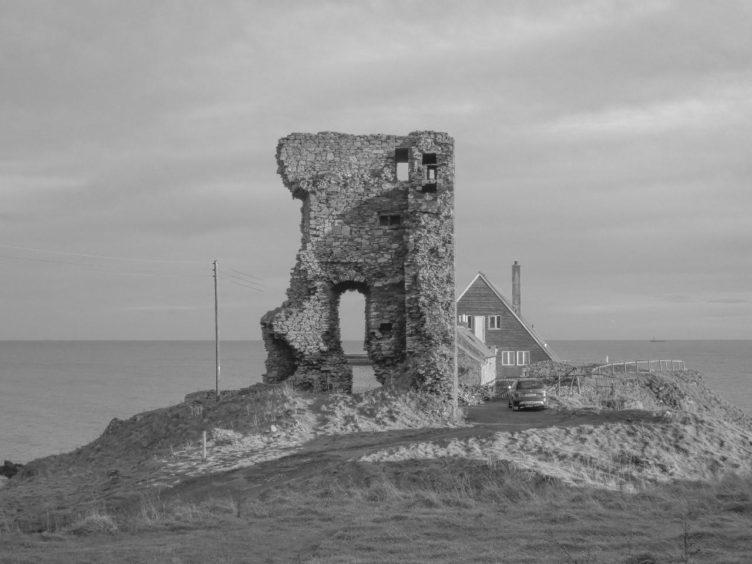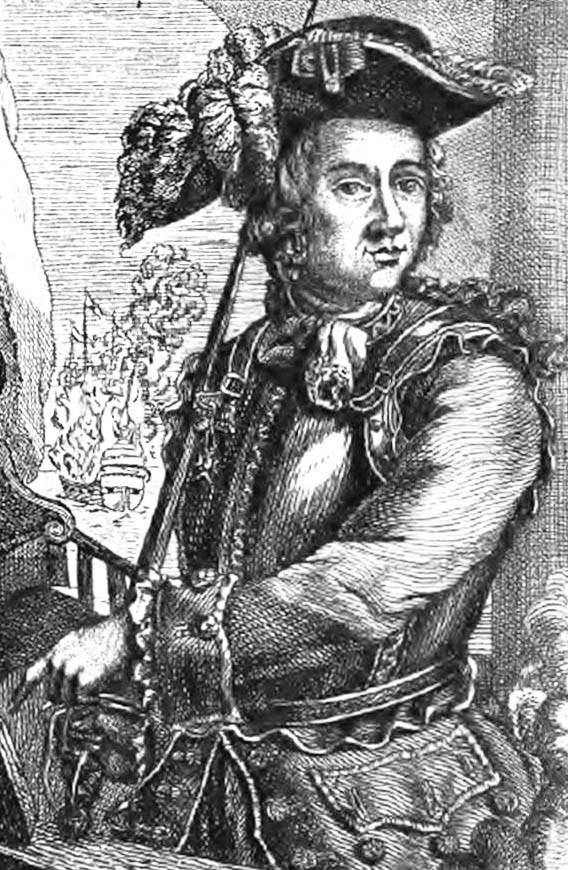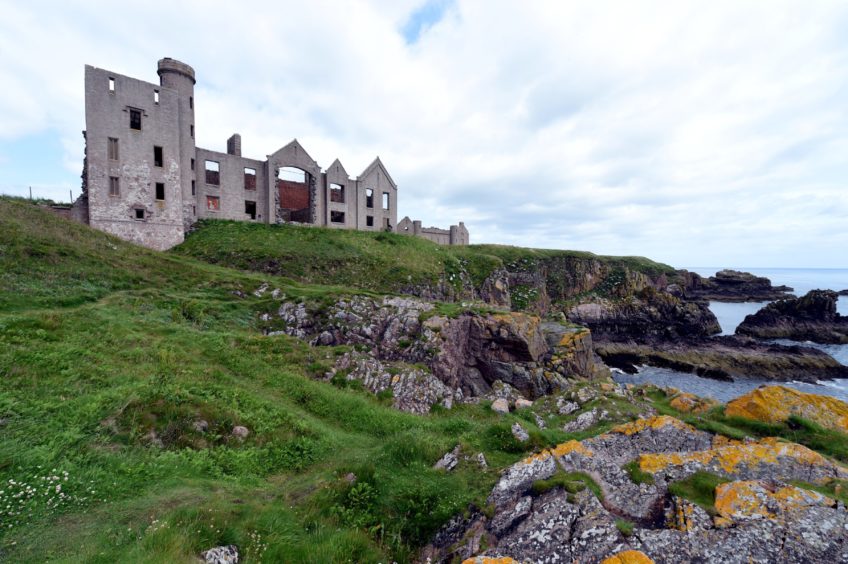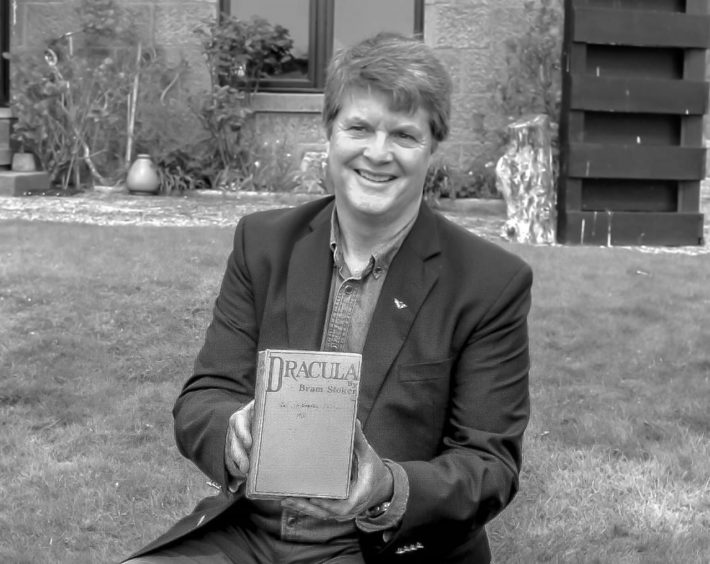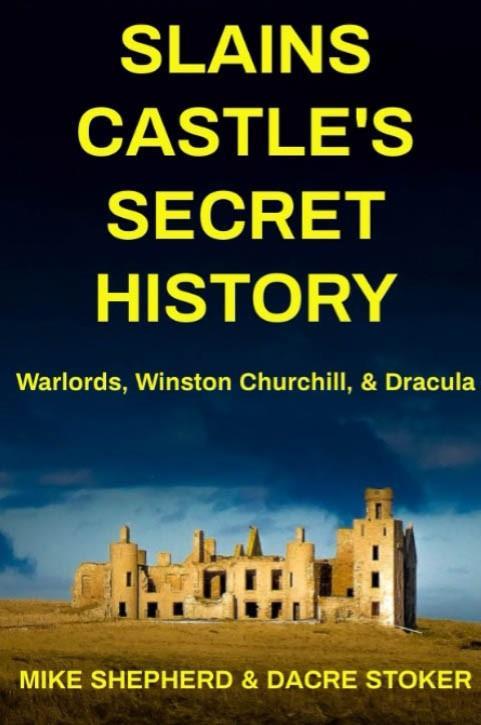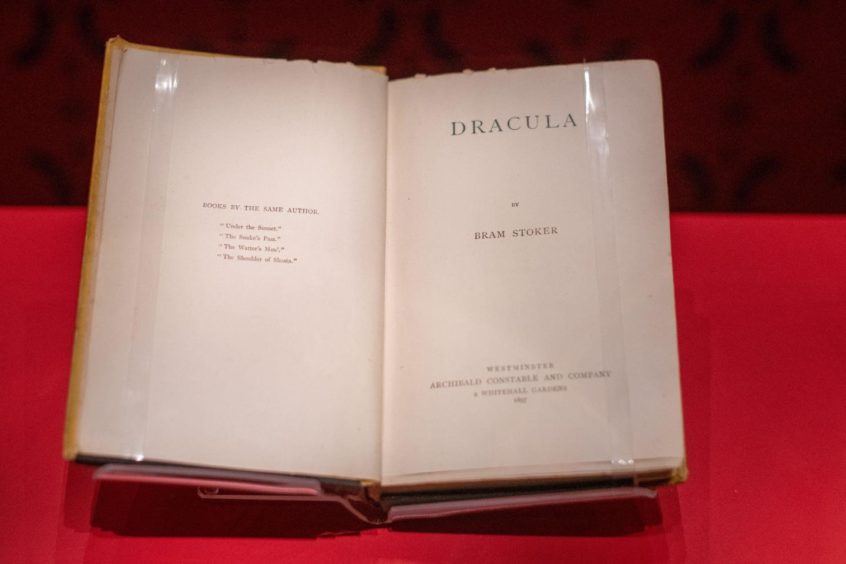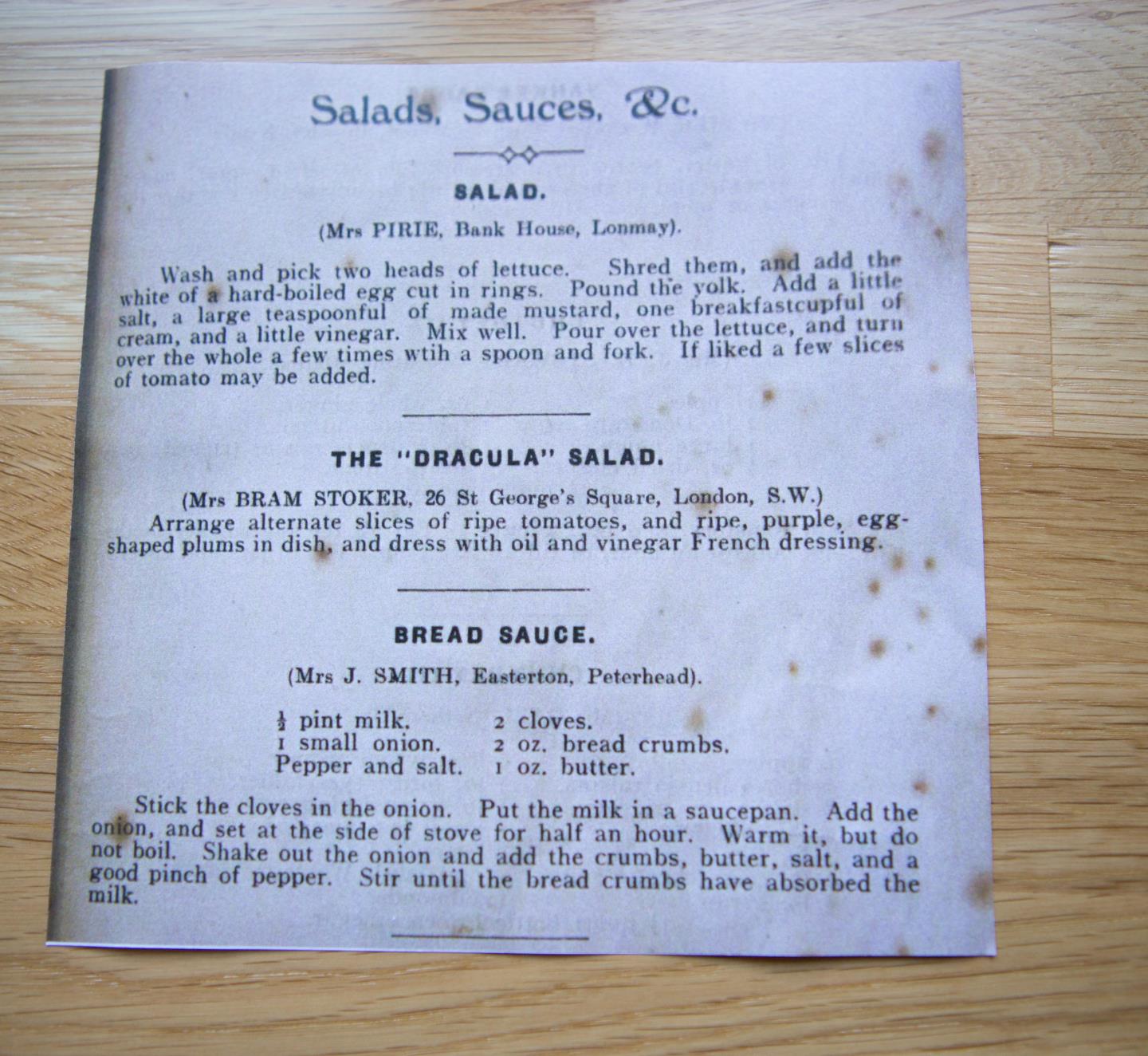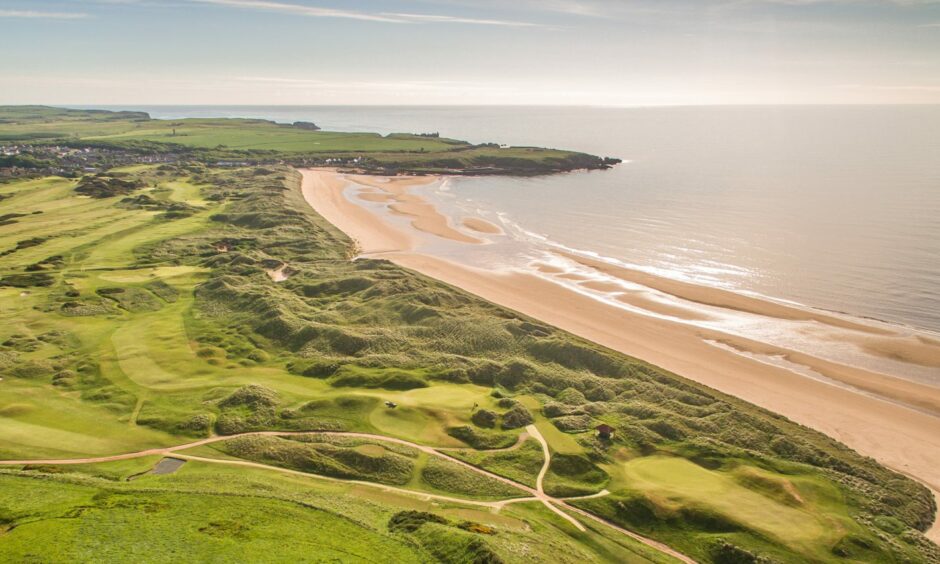Mike Shepherd wakes up every morning and feels blessed at the resplendent view from his window of one of the north-east’s most imposing structures.
It’s hardly surprising that Slains Castle, near Cruden Bay, has proved irresistible to so many visitors and was the inspiration for the world’s most famous Gothic novel.
After all, when it’s photographed in the haar, or under a full moon or from a boat in the North Sea, this is one of those rare places that casts a spell on those who witness it.
It has been the scene of intrigue, of dastardly invasion plans and divisive insurrection squabbles and attracted all manner of international celebrities, including James Boswell, Samuel Johnson and Winston Churchill, through the ages.
And there are even plans in the pipeline for regular tours of the castle led by a descendant of Bram Stoker, who was inspired to write Dracula in the late 19th Century.
But let’s explore some of the rich history of this macabre and mesmerising location by talking to the man who has delved into its past and discovered a wealth of material.
The striking building, which is also known as New Slains Castle to distinguish it from nearby Old Slains Castle, overlooks the North Sea from its dramatic cliff-top site, less than a mile east of Cruden Bay.
Its core is a 16th Century tower house, built by the 9th Earl of Erroll, but significant reconstruction of the castle has been carried out a number of times, most recently in 1837 when it was rebuilt as a Scots Baronial mansion.
Dark plots pervade the castle’s history
Mr Shepherd, who has spent myriad hours examining old scrolls, arcane documents and long-forgotten pieces of memorabilia, has chronicled his findings in a new book.
He told me: “I live under the shadow of Slains Castle and my house is probably its next door neighbour by about a foot or so.
“As an author, it was only natural to research its history to establish whether there was enough material for a book and I was very grateful that Dacre Stoker helped me with the work.
“A year later, I still cannot quite believe the stories that we discovered and which are so astonishing.
“Slains Castle has been at the centre of so much international intrigue and, perhaps, its very remoteness has helped to keep these activities secret for so long.”
One of the most audacious, if ill-starred, schemes was a plot devised by French forces to capitalise on the disorder and uncertainty that surrounded the Acts of Union in 1707.
As Mr Shepherd revealed: “The 9th Earl of Erroll, the resident of the first Slains Castle, took part in a Catholic rebellion in the north of Scotland with the help of Philip II of Spain (who had previously launched the Spanish Armada against British forces).
“When this failed, King James VI personally supervised the destruction of the first Slains Castle, using gunpowder which was given to him by Aberdeen Council.
“Louis XIV of France, who became famous as the Sun King (of the Palace of Versailles), sent a secret agent to Slains Castle in 1705 and again in 1707.
“His agent, who was an Irishman called Nathaniel Hooke, was given the task of whipping up a Jacobite Rebellion in advance of the Acts of Union, which eventually led to the United Kingdom being established in 1707.
“His attempts eventually failed, but not without his actions inadvertently nudging the Union along the way to its creation.
“However, by using Slains as a base for gathering military intelligence, Hooke visited in 1707 to organise an invasion of Scotland by a combined French and Jacobite army.
“The fleet set off from Dunkirk in 1708 and reached the Firth of Forth, only for the newly-formed British Navy to turn up and chase it off along the NE coast.
Battle artefacts still being found
“A naval engagement took place between the two sides, just offshore from Inverbervie, with the cannonballs flying for several hours – and some of these old artefacts are still being found in and around the village to this day.
“Although none of the ships were sunk, one of the French vessels was captured in the engagement.
“We discovered several important primary sources which gave us the most complete account of the abortive 1708 invasion, which is a part of Scottish history of which many people will simply be unaware.
“Even more astonishing is the fact that a naval engagement took place between the French and the British near Inverbervie and yet it has been long forgotten about, even in this part of the world where so many people are interested in exploring the past.
“I’m hopeful that we can at least remind readers about this rare piece of history.”
The renowned duo, Johnson and Boswell, visited Slains Castle in 1773 and were entertained by the earl and his brother.
Both the latter duo fought at Culloden – on opposite sides in a story that offers another insight into the family tensions between those who battled in 1746.
Then there is the tale of the customs official who battled smuggling in the Slains Castle area – a dangerous, but money-spinning trade for those prepared to lock horns with the exciseman – and the details behind Churchill arriving to see the prime minister’s daughter at Slains Castle, with almost two weeks to go to his wedding.
If that’s not sufficient, there is also the mysterious affair of the black rain of Slains, which Admiral Robert FitzRoy – of Darwin expedition fame – was asked to investigate.
And it was a case that was worthy of The X Files.
In recent times, most of the coverage of the castle has revolved around its links with Dracula and how the setting inspired Bram Stoker to create his enduring legacy.
That’s hardly surprising when one considers the impression the coastal fortress made on the young Irish author when he turned up in north-east Scotland.
Mr Shepherd said: “(The great-grand nephew) Dacre Stoker provided expertise on his famous ancestor and he also suggested that Bram Stoker and his books could be used as a running theme through the book.
“That was easy to do because Bram investigated the area’s local history for the two other novels – The Watter’s Mou’ (1895) and The Mystery of the Sea (1902) – which he wrote while he was on holiday in Cruden Bay.”
Stoker and his wife, Florence, immersed themselves in community life in the village, so much so that she helped to raise money to renovate an historic Aberdeenshire church by creating a special Dracula salad.
Florence Balcombe contributed the recipe to a pamphlet that was sold in aid of Cruden Parish Church shortly after her husband died in 1912.
Her instructions read: “Arrange alternative slices of ripe tomatoes and ripe purple egg-shaped plums in dish and dress with oil and vinegar French Dressing”.
All the proceeds from the sale of Cruden Recipes and Wrinkles went towards building an extension at the church, which dates back to 1776, to house an organ.
The Covid pandemic has obviously caused problems for anybody launching new cultural and heritage enterprises, but Mr Stoker has confirmed his intention to arrange tours of Cruden Bay and Slains Castle next summer.
He said: “I am in the process of making plans for a few tours in 2022 with the Experience Transylvania company to visit several places to celebrate the 125th anniversary of the publication of Dracula.
“I’m also hoping that the pandemic allows easy travel to Transylvania to visit sites which are associated with Bram’s novel and also a few associated with Vlad Dracula III.
“One of the places that we will visit is the recently discovered location of Bram Stoker’s fictional Castle Dracula in the Calimani National Park (in Romania).
“I am also planning visits to Whitby in England, where Bram spent one holiday in 1890.
“We will then head up the coast to Cruden Bay in Aberdeenshire where he actually wrote the novel, along with a few other books.
“This is the home of Slains Castle, where Bram got his inspiration for the interior of Castle Dracula.”
Mr Shepherd is one of life’s great enthusiasts, not just in discussing Slains Castle, but everything to do with these coastal resorts and how they developed.
For a while at least, towards the end of the Victorian era, there were hopes that Cruden Bay could become as famous as Baden Baden, Bordeaux or Cannes.
Winston Churchill played golf there, alongside another PM, Herbert Asquith, while aristocrats flocked to visit the course and revel in the luxury of the Cruden Bay Hotel.
The wealthy flocked to Cruden Bay
The latter was opened in 1899. The interior of the building was sumptuous and the drawing room featured furniture of Chippendale mahogany in Louis XV style. No luxury was spared; the kitchens were staffed with French and Italian chefs.
The guests were prominent businessmen of the time, including Sir Jeremiah Colman, the manufacturer of the famous mustard, and Sir William Burrell from Glasgow, who is best known today for his art collection in the city.
The hotel was located half a mile from the railway station and trams were provided to bring visitors to the hotel’s front door.
Mr Shepherd said: “The hotel proved vastly popular over a 10-year period, but then the numbers began to drop.
“The area faced problems in that it took 14 hours to get there from London by train and the summer season was restricted from June to September.
“It was easier to get to the continent from London and the hotel slipped in and out of profit up until the Wall Street Crash happened in 1929.
“Shortly afterwards, a big fire destroyed the railway station and a decision was made to stop passenger traffic on the line.”
That might have been the climax of the journey for one grand scheme. But it’s just the latest chapter in Mr Shepherd’s ongoing love affair with Slains and the Bay.
- Slains Castle’s Secret History is available in local bookshops and on Amazon.
